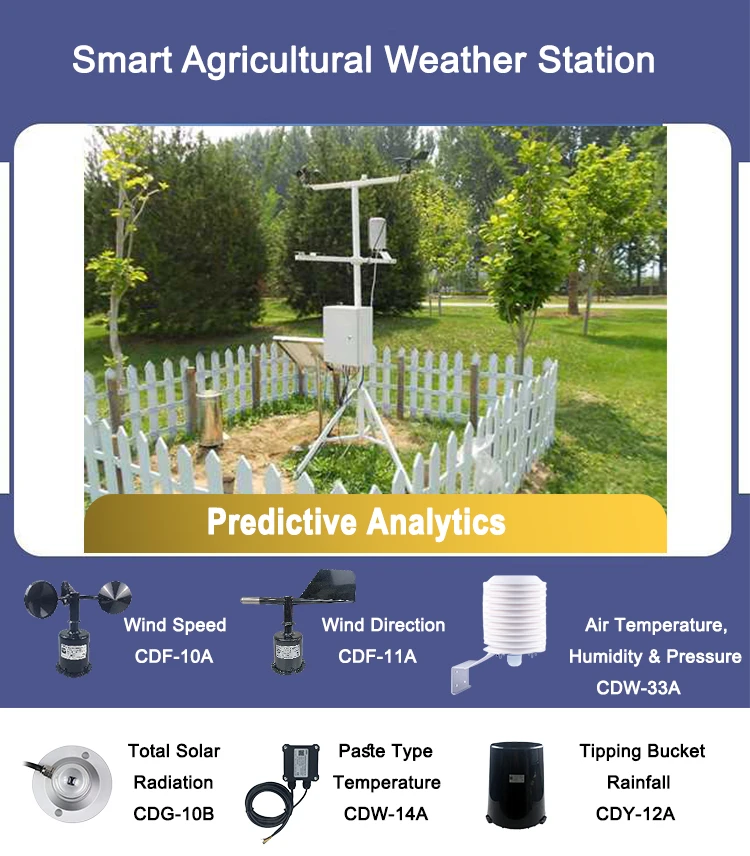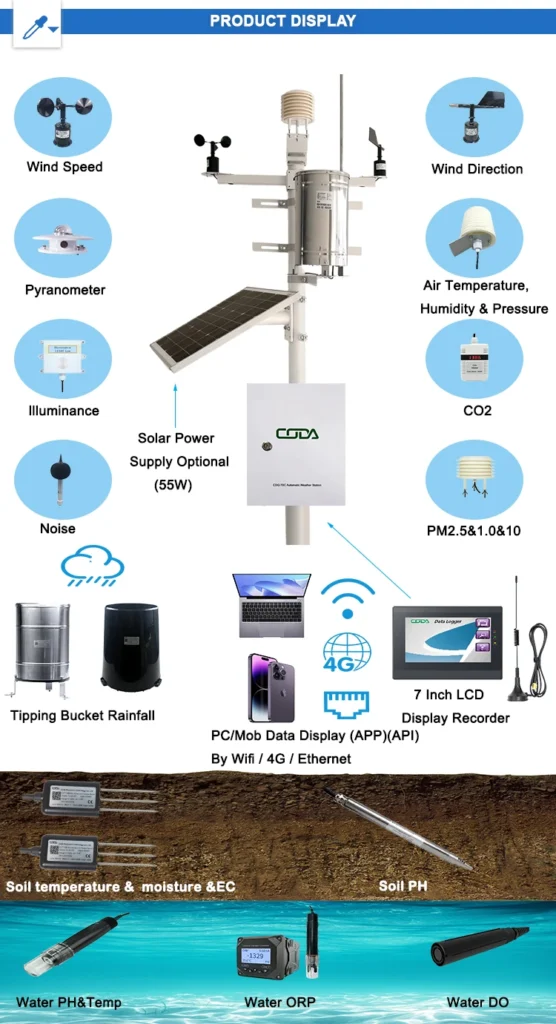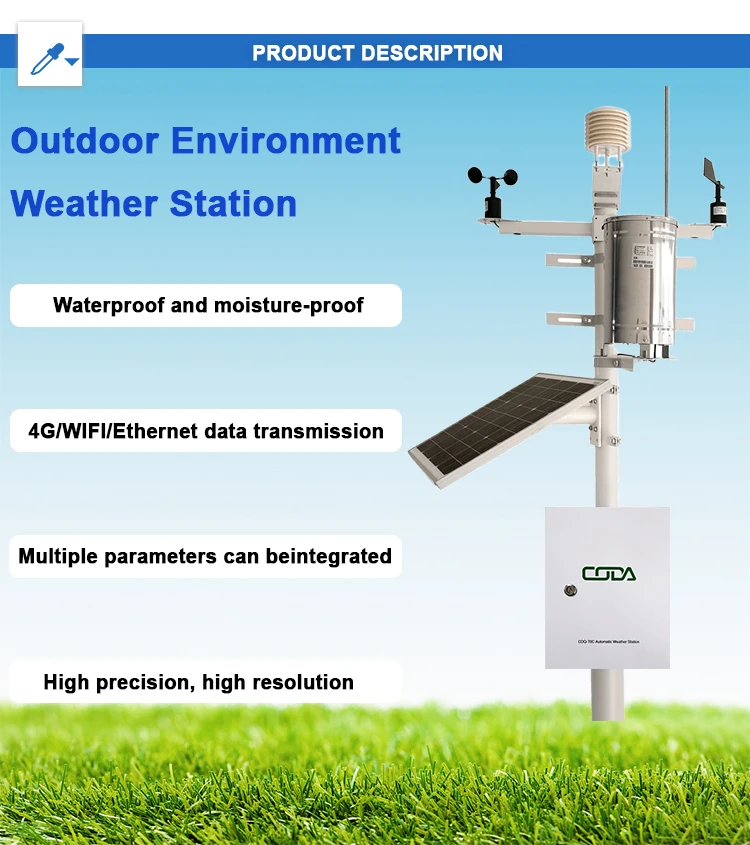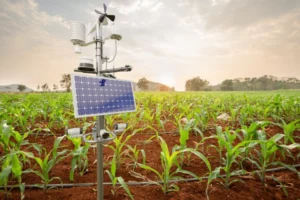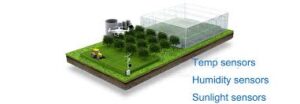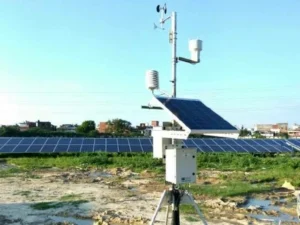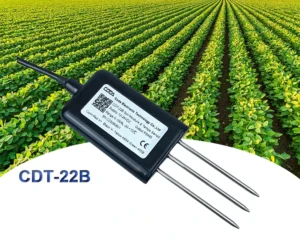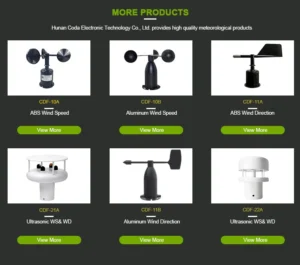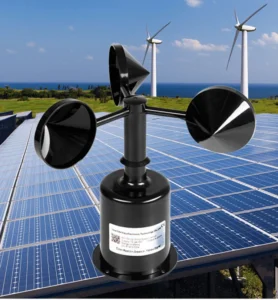What are the main components of a weather station?
A weather station is a system that checks and records various weather conditions. It usually includes these main parts:
1. **Sensors**:
These are important for measuring and tracking different weather conditions. Each type of sensor measures a certain weather condition. They give us important information to understand changes in the environment. Weather stations include:
– **Temperature Sensor**: Measures air temperature.
– **Humidity Sensor**: Tracks humidity levels in the air, both absolute and relative.
– **Barometric pressure Sensor**: It measures and keeps track of air pressure.
– **Wind Speed Sensor**: Measures how fast the wind measurements is blowing.
– **Wind Direction Sensor**: The text identifies where the wind vane comes from.
– **Precipitation Sensor**: Records rainfall and other forms of precipitation.
– **Sunshine Solar Radiation Sensor**: It measures how strong the sun’s rays are and the amount of ultraviolet light.
2. **Data Logger**:
This device gets, processes, and saves the information collected by sensors. High precision and stability are key features. They help analyze and use collected data well.
3. **Data Transmission Equipment**:
To help with remote monitoring and data sharing, weather stations often have communication modules or network interfaces. These send sensor data to central databases or key systems. This makes it easy to access for both analysis and sharing.
4. **Power Supply System**:
A reliable power source keeps things running smoothly without any breaks. Weather stations measuring can use solar panels, wind turbines, or batteries to get energy. These options are good for different types of weather.
5. **External Protection Devices**:
Weather stations are often placed outside, so they need to be protected. They use windshields, canopies, and devices to protect against lightning. These help keep the equipment safe from bad weather and damage.
When these parts work together, the personal weather station runs well. It checks, records, and sends weather data. This data helps with research. It also supports forecasts and climate assessments.
Meteorological Data Transmission
Weather stations often send weather data to weather departments or agencies. These groups study data to give clear weather forecasts. They share climate information and send updates to monitoring centers in real-time.
Other groups, such as emergency management authorities, can use this information. It helps them get ready and respond better.
Transmission methods can be split into two main types:
– **Wired Transmission**:
It often uses connections like Ethernet or serial ports. These are good for sharing data over short distances.
– **Wireless Transmission**:
Uses wireless technologies such as Wi-Fi, Bluetooth, Zigbee, or long-range protocols. The choice depends on the land and how far it is.
Communication Protocols for Meteorological Data
Different communication protocols are used to send meteorological data. Each one is designed for specific needs.
– **TCP/IP**: It provides dependable data transfer and is often used in weather-related tasks.
– **UDP**: It allows for faster transmission, but it does not ensure reliability. It is good for high real-time needs.
– **LoRaWAN**: This is a low-power network protocol. It works well for long use and sending data over long distances.
– **NB-IoT**: Efficient for connecting many devices and using less power in cellular networks.
– **Specialized Protocols (e.g., GRIB)**: This tool is made for specific weather tasks. It helps store and share weather data.
Purpose of Weather Monitoring
Weather stations are important for accurate and complete weather monitoring. Their main job is to give useful information to regulatory authorities, environmental planners, and emergency response teams.
This applies at both the national level and the local level. These systems help predict storms and give accurate climate warnings. They help communities stay informed and prepared for weather changes.
